|
Mallard Anas platyrhynchos Pato Inglés,
|
 |
|
Male - Photo: G. Beaton
|
|
A brown duck with an iridescent green head, blue wing patch, white neck ring and a yellow bill. The female and non-breeding male resemble the American Black Duck but are a lighter brown color and have a dull yellow green or mottled bill. Audio 2 (M. Oberle). Length: 50-65 cm.; weight: 1,000-1,300 g. Breeds in much of North America and Eurasia. Population levels in North America fluctuate, especially depending on weather conditions during the breeding season. For example, the U.S. Fish & Wildlife Service estimated a fall flight of 11.7 million mallards for 1998, down 18 percent from 1997's estimate. On its breeding grounds, the chicks stay with the female until they can fly, while the male ignores them. Accidental in wetlands of Puerto Rico (e.g. Río de Añasco, winter 1999-2000, 27 Jan. 2001), but most individuals of this species in Puerto Rico are probably recently escaped domestic ducks rather than migrants from wild populations. Many domestic varieties are pure white or have other odd plumages. One of the most unusual domestic varieties is the the Indian Runner Duck which runs almost vertically in tight flocks (see photo below and http://runnerduck.net/). TAXONOMY: ANSERIFORMES; ANATIDAE; Anatinae |
|
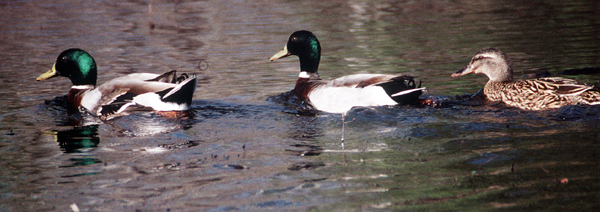 |
|
Two males and a female - Photo: G. Beaton
|
 |
|
Female feeding - Photo: M. Oberle
|
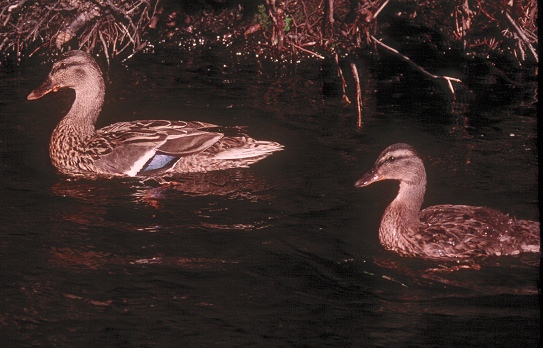 |
|
Female and chick - Photo: M. Oberle
|
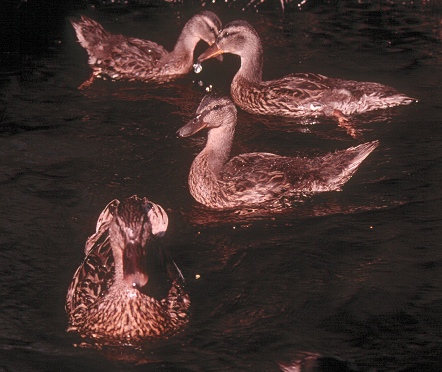 |
|
Female and chicks - Photo: M. Oberle
|
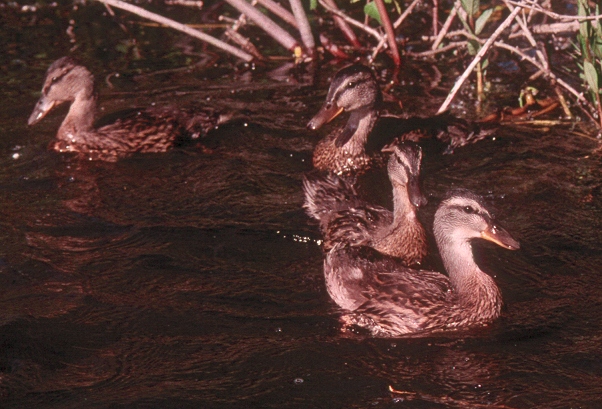 |
|
Chicks - Photo: M. Oberle
|
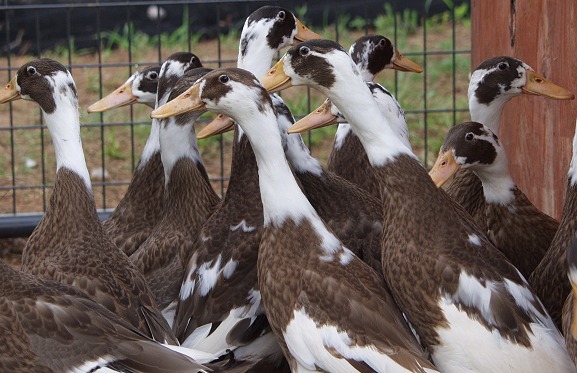 |
|
Domesticated Indian Runner Duck - Photo: W. Wilhoite
|
|
References Bent, A.C. 1923. Life histories of North American wild fowl, part 1. Smithsonian Instit. U.S. National Museum Bull. 126. (Reprinted by Dover Press, NY, 1962). del Hoyo, J., A. Elliott, and J. Sargatal, eds. 1992. Handbook of Birds of the World, Vol. 1. Ostrich to ducks. Lynx Edicions, Barcelona. Drilling, N., R. Titman, and F. McKinney. 2002. Mallard (Anas platyrhynchos). In The Birds of North America, No. 658 (A. Poole and F. Gill, eds.). The Birds of North America, Inc., Philadelphia, PA. Dzus, E. H., and R. G. Clark. 1998. Brood survival and recruitment of Mallards in relation to wetland density and hatching date. Auk 115:311-318. Ehrlich, P.R., D.S. Dobkin, and D. Wheye. 1988. The birder’s handbook: a field guide to the natural history of North American birds. Simon and Schuster/Fireside, NY. Johnson, W. P., and F. C. Rohwer. 1998. Pairing chronology and agonistic behaviors of wintering Green-winged Teal and Mallards. Wilson Bull. 110:311-315. Madge, S. and H. Burn. 1988. Wildfowl: an identification guide to the ducks, geese, and swans of the world. C. Helm, London. Raffaele, H.A. 1989. A guide to the birds of Puerto Rico and the Virgin Islands. Princeton. Raffaele, H.A. 1989. Una guía a las aves de Puerto Rico y las Islas Vírgenes. Publishing Resources, Inc., Santurce, PR. Raffaele, H.A., J.W. Wiley, O.H. Garrido, A.R. Keith, and J.I. Raffaele. 1998. Guide to the birds of the West Indies. Princeton. http://migratorybirds.fws.gov/reports/ahm00/emaljanf.pdf Next related species in taxonomic order Previous related species in taxonomic order |
|